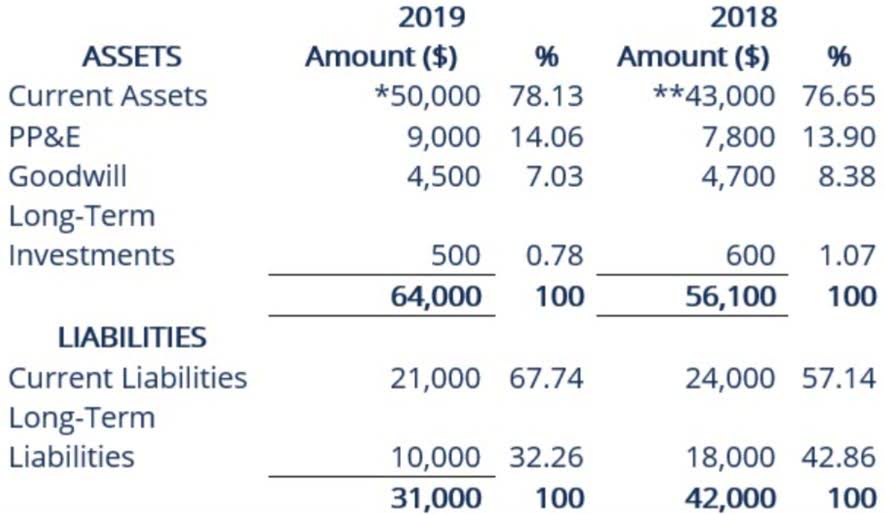
To get a jumpstart on building your financial literacy, download our free Financial Terms Cheat Sheet. For the purpose of the example, we are only showing the current assets section. If it is a short-term investment, such as a money market fund, then it would be classified as https://www.bookstime.com/articles/bookkeeping-miami a current asset.
What is the formula to calculate current assets?
In the asset sections mentioned above, the accounts are listed in the descending order of their liquidity (how quickly and easily they can be converted to cash). Similarly, liabilities are listed in the order of their priority for payment. In financial reporting, the terms “current” and “non-current” are synonymous with the terms “short-term” and “long-term,” respectively, and are used interchangeably. Personal and business finance success relies heavily on the effective use of assets and liabilities. Assets can be categorized as current, fixed, tangible, and intangible, depending on their purpose. However, liability can be divided into current, non-current and contingent.

Current Assets FAQs

Common stock, additional paid-in capital, treasury stock, and retained earnings are listed for corporations. Partnerships list member capital accounts, contributions, distributions, and earnings for the period. A classified balance sheet is a financial statement that reports asset, liability, and equity accounts in meaningful subcategories for readers’ ease of use. In other words, it breaks down each of the balance sheet accounts into smaller categories to create a more useful and meaningful report.
- It’s recommended to review your assets and liabilities at least once a year.
- For the past 52 years, Harold Averkamp (CPA, MBA) hasworked as an accounting supervisor, manager, consultant, university instructor, and innovator in teaching accounting online.
- Ultimately, the order of liquidity of accounts will depend on the company and the industry.
- Liabilities are usually considered short-term (expected to be concluded in 12 months or less) or long-term (12 months or greater).
- Unsold inventory on hand is often converted to money during the normal course of operations.
- For example, owning a house or stock investments would be classified as assets, while a home loan or unpaid bills would be categorized as liabilities.
Risk Management

These receivables generally have a 30 – 60 days credit period to liquidate themselves. Next, inventory is the stock lying with the company and can be converted into cash from one month to the time of sales. Sometimes inventory can be sold quickly, so its position may vary from organization to organization. Then comes the non-current assets like plant and machinery, land and building, furniture, vehicles, etc.; they need a longer selling period and thus need time in liquidation. Financial assets refer to investments such as stocks, bonds, mutual funds, and other securities.

While both assets and liabilities are crucial for understanding an individual’s or a business’s financial standing, they serve opposite purposes in financial management. The difference between assets and liabilities can be broken down into various aspects, including ownership, function, and financial implications. Short term liabilities like creditors, bank overdraft are matched with assets which are more liquid, while long term liabilities are matched with lesser liquid assets.
- A company’s financial statements—balance sheet, income, and cash flow statements—are a key source of data for analyzing the investment value of its stock.
- Inventory is considered more liquid than other assets, such as land and equipment but less liquid than other short-term investments, like cash and cash equivalents.
- Finance Strategists has an advertising relationship with some of the companies included on this website.
- There’s no standardized set of subcategories or required amount that must be used.
- Similarly, liabilities are listed in the order of their priority for payment.
- When the working capital is managed well, it can help the business increase its profits, value appreciation, and liquidity.
- By diversifying your asset base, focusing on liquidity, and managing liabilities like short-term debts and long-term loans effectively, you can secure financial health.
Land remains at historical cost, and depreciable items like buildings are reflected at their current book value (historical cost less accumulated depreciation). If the asset has appreciated over time, the higher market value of the assets would not be seen on the balance sheet. Recall that the income statement shows the performance of a firm over the https://x.com/BooksTimeInc course of time.

Order for Listing Current Liabilities
If a specific security has no liquidity, markets cannot execute trades, security holders can not sell their assets, and parties interested in investing in the liabilities in order of liquidity security can not buy the asset. If you’re trading stocks or investments after hours, there may be fewer market participants. Also, if you’re trading an overseas instrument like currencies, liquidity might be less for the euro during, for example, Asian trading hours. As a result, the bid-offer-spread might be much wider than had you traded the euro during European trading hours. Explore our online finance and accounting courses, which can teach you the key financial concepts you need to understand business performance and potential.
- Financial liquidity also plays a vital part in the short-term financial health of a company or individual.
- This is helpful for varied stakeholders in comparing, analyzing, and decision making as they can easily compare two or more balance sheets of either the same company or any other company.
- However, more frequent reviews can help make timely adjustments based on financial goals or market conditions.
- These types of assets are highly liquid compared to fixed or tangible assets, meaning they can be converted to cash relatively easily.
- The current ratio is used to provide a company’s ability to pay back its liabilities (debt and accounts payable) with its assets (cash, marketable securities, inventory, and accounts receivable).
- Next, the money owed by the business in the normal course of sales, which is accepted by the general credit terms of the company, is generally known as accounts receivables.
- Companies often have other short-term receivables that may convert to cash quickly.
- One of the main reasons for balancing assets and liabilities is to achieve financial stability.
- The ratio is calculated by dividing the operating cash flow by the current liabilities.
- On the other hand, unsecured liabilities are not backed by any specific asset.
- When the spread between the bid and ask prices widens, the market becomes more illiquid.
- What’s the difference between financial liabilities and operating liabilities?
- A non-financial example is the release of popular products that sell-out immediately.
Managing assets involves making decisions about acquiring, holding, or disposing of resources to maximize financial benefits. The key to effective asset management lies in ensuring that your assets are working for you. The other assets section includes resources that don’t fit into the other two categories like intangible assets.
